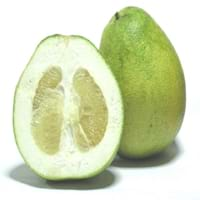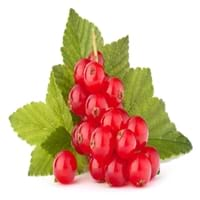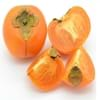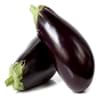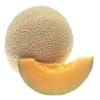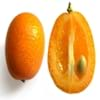Health Benefits
Cancer prevention, Heart care, Prevents Urinary Tract Infection
Cancer prevention, Gout treatment, Heart care, Regulation of heart rate, Treatment of rheumatism
General Benefits
Digestive aid, Fights against infections, Flu treatment, Healing of wounds, Helps in weight loss, Treatment of common cold
Anti oxidant properties, Controls blood pressure, Cures fever, Digestive aid, Healing of wounds, Helps in weight loss, Strengthens bones
Skin Benefits
Anti-aging benefits, Brightens and lightens complexion
Brightens and lightens complexion, Reduces wrinkles, Treatment of acne
Hair Benefits
Promotes longer and healthier hair, Protects hair
Protects hair
Allergy Symptoms
Abdominal cramps, Abdominal pains, Diarrhea, Lightheadedness, Nasal congestion, Nausea, Swallowing difficulties, Swelling of mouth, tongue or lips, Vomiting
Abnormally rapid heart rate, Anaphylaxis, Breathing difficulty, Hives, Itching, Swallowing difficulties
Side Effects
Allergic reaction, Dizziness, Stomach pain
Possibly unsafe during pregnancy
Best Time to Eat
As a snack in the late afternoon, Don't consume at night and before bed, Eat the fresh ones, avoid mixing with any other foods, don't eat after meal., Morning time (before lunch)
Best if taken as a breakfast (or empty stomach), As a snack in the late afternoon, Don't eat after meal, Morning time (before lunch)
Vitamin A (Retinol)
Not Available
Vitamin B5 (Pantothenic Acid)
Not Available
Vitamin B9 (Folic acid)
Not Available
Vitamin C (Ascorbic Acid)
Vitamin E (Tocopherole)
Not Available
Vitamin K (Phyllochinone)
Not Available
Lutein+Zeaxanthin
Not Available
Calories in Fresh Fruit with Peel
Calories in Fresh Fruit without Peel
Not Available
Not Available
Calories in Frozen Form
Not Available
Not Available
Calories in Canned Form
Not Available
Not Available
Calories in Jam
Not Available
Type
Citrus, Tropical
Berry
Season
All seasons
Summer
Varieties
Chandler, Cocktail, Cuban Shaddock, Hirado Buntan, Honey, Jaffa Red, Mato Buntan, Pomelit, Reinking, Siamese Sweet and Sweetie
Rovada, Stanza, Red Lake, Junifer and Jonkheer van Tets
Color
Green, Pink, Red, Yellow
Red
Inside Color
Creamy Yellow
Red
Taste
Juicy, Sweet
Sour, Tart
Origin
Malaysia, South-Eastern Asia, Thailand
Europe
Soil Type
Clay, Loam, Sandy
Moist, Well-drained
Climatic Conditions
Warm
Cold
Facts about
- Flowers of pomelo fruit are used to make perfumes.
- Pomelo tree wood is used for the manufacture of tool handles.
- Life of pomelo tree is around 10 years.
- Height of pomelo can be 15-20 feet.
- The albino version of red currants known as white currants, are often sold as different fruit.
- Red currant tea is healthy substitute for coffee.
- There are more than 150 varieties of red currants.
Top Producer
China
Russia
Other Countries
Argentina, India, Israel, Mexico, South Africa, Sudan, Thailand, Turkey, United States of America
Belgium, France, Germany, Ireland, Italy, Netherlands, Poland, Portugal, Scotland, Spain, Sweden, United Kingdom
Top Importer
Europe
Germany
Top Exporter
United States of America
Russia
Botanical Name
Citrus maxima
Ribes rubrum
Synonym
Citrus grandis
Not Available
Subkingdom
Tracheobionta
Tracheobionta
Division
Magnoliophyta
Magnoliophyta
Class
Magnoliopsida
Magnoliopsida
Order
Sapindales
Saxifragales
Family
Rutaceae
Grossulariaceae
Species
C. maxima
R. rubrum
Generic Group
Citrus fruit
Saxifrage
Difference Between Pomelo and Red Currant
We might think that Pomelo and Red Currant are similar with respect to nutritional value and health benefits. But the nutrient content of both fruits is different. Pomelo and Red Currant Facts such as their taste, shape, color, and size are also distinct. The difference between Pomelo and Red Currant is explained here.
The amount of calories in 100 gm of fresh Pomelo and Red Currant with peel is 38.00 kcal and 56.00 kcal and the amount of calories without peel is Not Available and Not Available respectively. Thus, Pomelo and Red Currant belong to Low Calorie Fruits and Low Calorie Fruits category.These fruits might or might not differ with respect to their scientific classification. The order of Pomelo and Red Currant is Sapindales and Saxifragales respectively. Pomelo belongs to Rutaceae family and Red Currant belongs to Grossulariaceae family. Pomelo belongs to Citrus genus of C. maxima species and Red Currant belongs to Ribes genus of R. rubrum species. Beings plants, both fruits belong to Plantae Kingdom.
